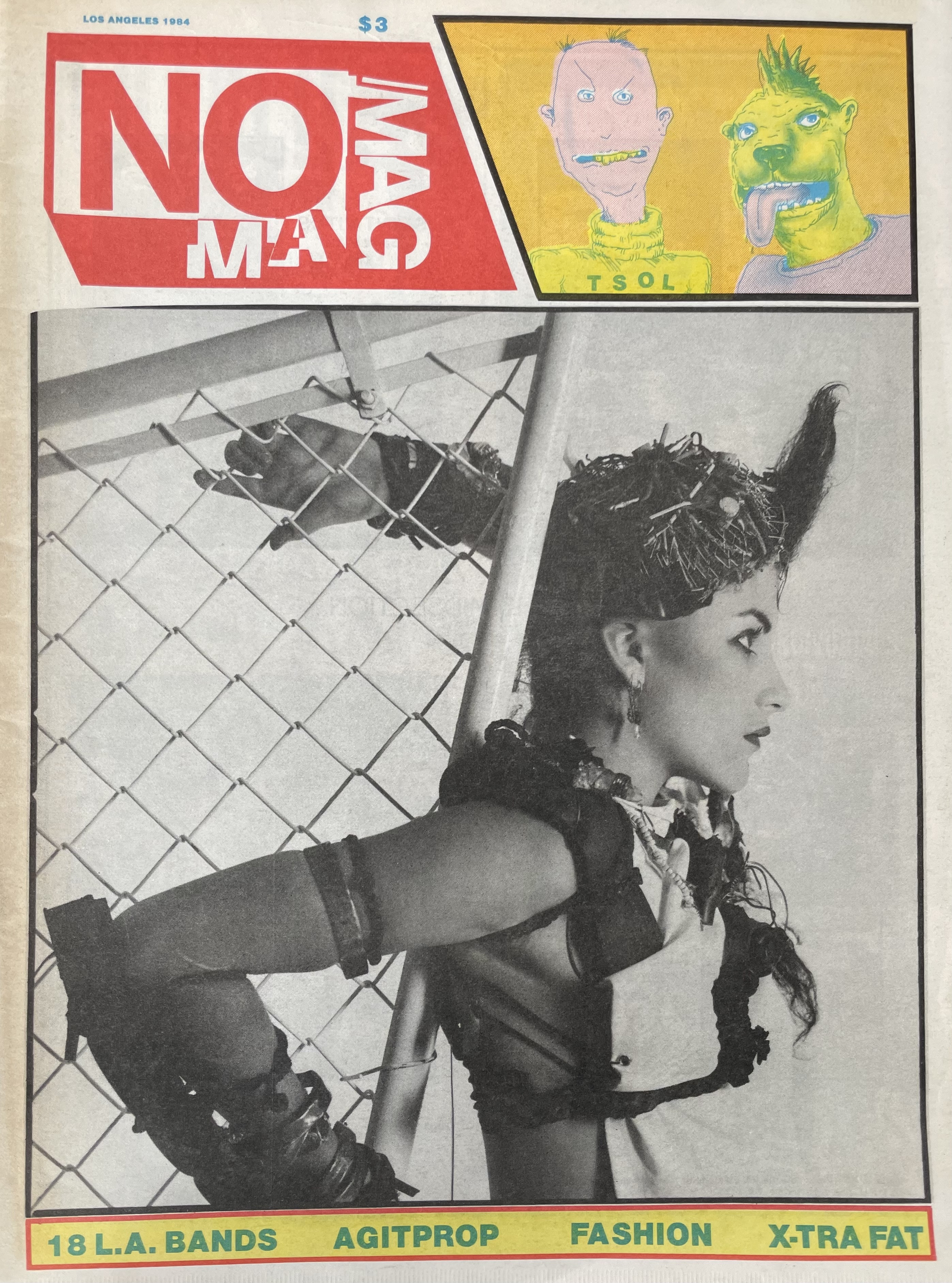1984 wasn’t universally dire for independent music, but for the sub-underground rock and roll scene in Los Angeles, California, as viewed through the lens of the thirteenth issue of NoMag fanzine, featuring Nancy from “Animal Dance” on the cover, it certainly seemed to be. Unless your focus was solely on the SST Records bands – the year gave us Double Nickels on The Dime, Meat Puppets II, and Zen Arcade – it was easy to believe that LA’s once vibrant music scene had rapidly deteriorated into uninspired cowpunk, recycled goth, or commercially-minded pseudo-roots music.
This downturn is reflected in NoMag itself, suggesting that not all issues were of equal quality. It’s a disappointing realization. Leafing through the pages, it’s evident that editor Bruce Kalberg’s interest had shifted more towards the superficial aspects of alternative culture than the music that once defined it. The figures within are depicted as either comical cowpokes, sporting awkward new wave hairstyles, or embodying a contrived “LA sleaze” aesthetic. There’s even a featured group called the Hollywood Hillbillies, who, thankfully, remained outside my sphere of musical encounters.
 Nancy from Animal Dance graces the cover of NoMag #13, embodying the 1984 LA music scene shift
Nancy from Animal Dance graces the cover of NoMag #13, embodying the 1984 LA music scene shift
Upon arriving at KCSB as a college radio DJ in 1985, the records from bands interviewed in this very NoMag issue were overstocking our library. Acts like The D.I.’s, the “no original members” TSOL, Tupelo Chain Sex, The Fiends, Kommunity FK, Detox, and similar groups dominated. They often found homes on labels such as Enigma and Restless, labels that emerged from the hardcore scene to promote this image-conscious rock, alongside speed metal and novelty punk. While I admit a certain fondness for Tex & The Horseheads – they encapsulate the spirit of ‘84 LA for me, for better or worse – SST bands are notably absent from these pages, except for a paid advertisement. They simply weren’t fashionable enough for this iteration of NoMag.
An interview with the Cambridge Apostles, featuring Alice Bag and members of The Middle Class, describes themselves as a dance band. Alice, in the interview, seems more interested in dancing away from questions about The Bags, her previous band. Much of what NoMag #13 documents feels like going through the motions, the debris of a recently collapsed music scene, with many musicians desperately seeking a path to commercial success. John Doe of X is interviewed about his band and their relationship with Elektra Records, and he exudes optimism. However, his anthology book, More Fun In The New World, published decades later, offers a different perspective, one that doesn’t quite align with the sunny outlook presented in this interview.
That John Doe book, subtitled “The Unmaking and Legacy of LA Punk,” resonates deeply because it confirms the very decline I’ve been lamenting through the lens of NoMag #13. The “unmaking” of the LA punk scene is happening in real-time within the pages of this fanzine. The cover featuring Nancy from “Animal Dance” becomes almost symbolic of this shift, a move towards something less raw and authentic, and perhaps more performative and image-driven, in the evolving landscape of Los Angeles music.
